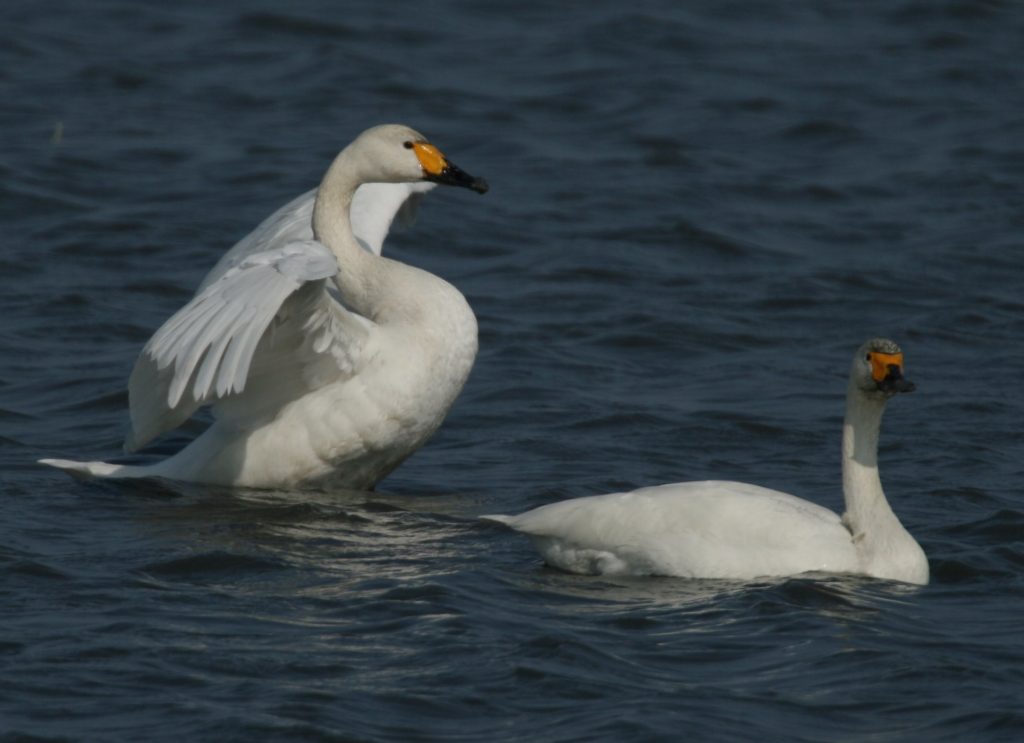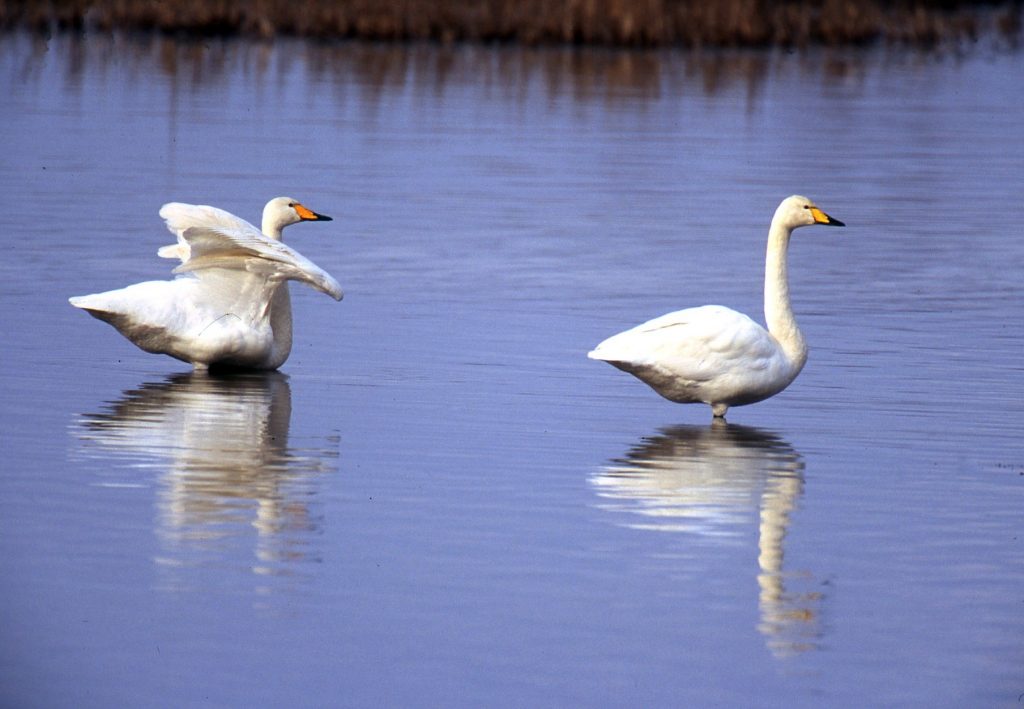The Bewick’s Swan Cygnus bewickii is a breeding endemic of the tundra of Russia. It means that it is only breeding in this part of the World.

It is easily distinguished from the Mute Swan Cygnus olor by its yellow and black bill and a much smaller size.
The Mute Swan is typical with orange on the bill (photo Didier Vangeluwe).
To tell the difference between a Bewick’s and a Whooper Swan Cygnus cygnus – the third swan species of Eurasia – is much less straightforward! The Whooper has also yellow on the bill but more extensively, it is of greater size and is may be best detected by its long, very long neck with a powerful bill and head. Side to side, the Bewick’s is delicate and slender. The voice could also help to identification. The Mute Swan is … mute but gives a very particular noise with its wings when flying. Both Bewick’s and Whooper are very vocal, frequently calling a “whoop-whoop-whoop” deeper and stronger with a second syllable higher for the Whooper compared to those of the Bewick’s .
The long and triangular bill with a large proportion of yellow is typical of the Whooper Swan (photo Didier Vangeluwe).
Weather conditions prevailing during the winter in the tundra does not allow an herbivorous bird like the Bewick’s Swan to stay all-year round close to its breeding site. It is a long distance migratory species. But not all Bewick’s are wintering in the same area. They are actually 3 distinct zones, one centred on the North Sea, another in South East China and Japan and a third on the southern shores of the Caspian Sea.
Three wintering zones? Really? No! Since 1997, a new wintering zone has been established in Greece, in the Evros Delta. At the cross-road of Europe, Asia and Africa, the Evros Delta is one of the most – if not the most – nature-rich coastal wetland of the Mediterranean. The flock was estimated to 4500 Bewick’s Swans during February 2015. An incredible sight! And a unusual event considering that we are the last years much more used to announce decline and extinction…
But from which breeding grounds are coming these swans? What route do they fly to connect the Arctic to the Mediterranean? What factors make possible that Bewick’s Swans have colonized a new wintering area situated minimum 2000 km from the nearest known “historical” site? Is it needed to take (management or legal) measures to assure their future in Greece?
To answer these questions is particularly important considering that in the meantime the numbers of Bewick’s Swans wintering in the North Sea area have declined by 30% during the last 15 years. A very important and worrying drop!
It is to participate to the understanding of these questions that ornithologists of the Severstov Institute of Ecology and Evolution (Bird Ringing Centre of Russia), the Goose, Swan and Duck Study Group of Northern Eurasia and the Royal Belgian Institute of Natural Sciences (BeBirds – Belgian Ringing Centre) have joined their effort, together with the Evros Delta National Park Management Authority and the Forest Research Institute of Thessaloniki to launch the program “The Odyssey of the Bewick’s Swan – another route to Greece!”
We propose to share our observations and findings with you.


